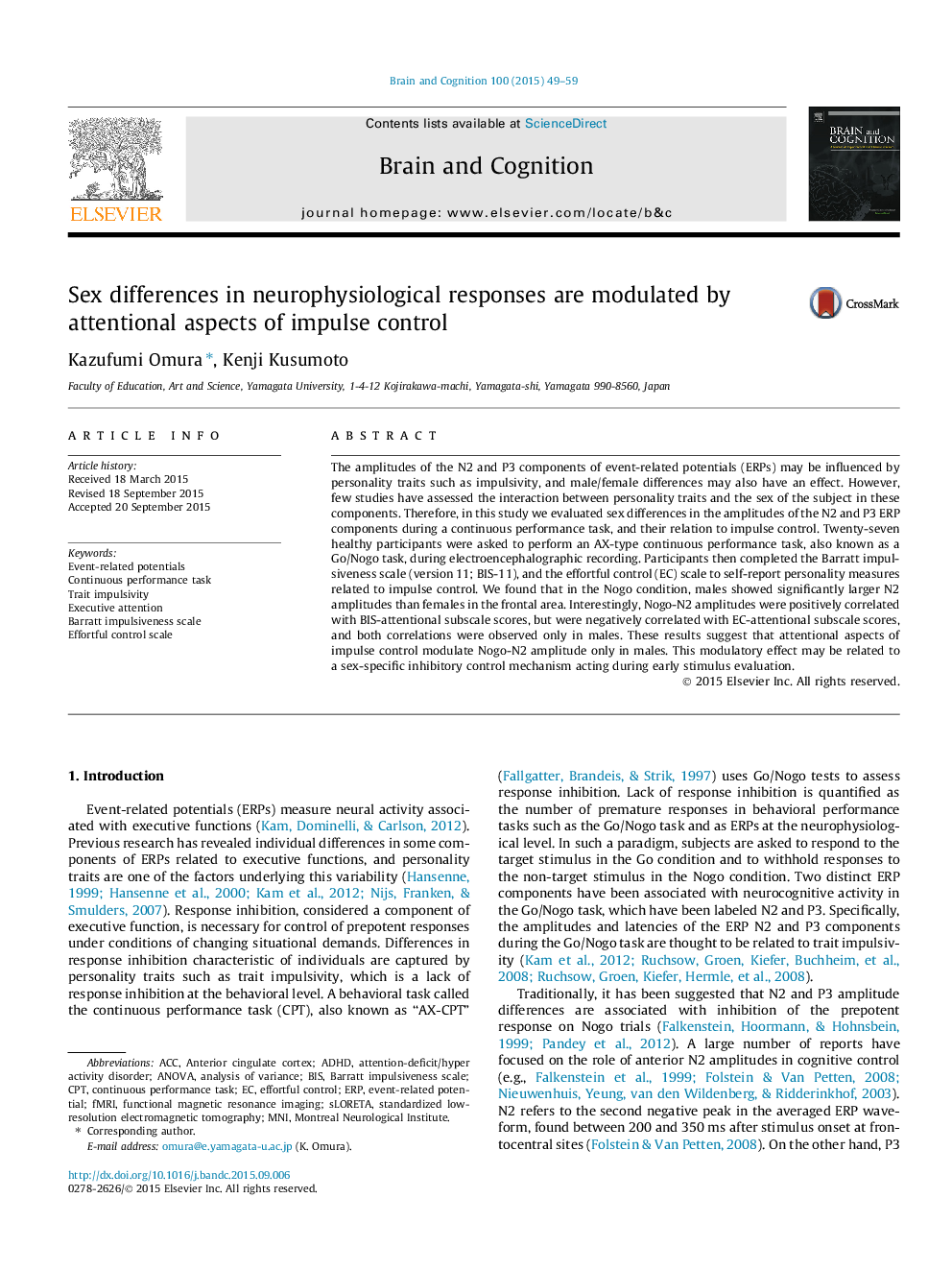| Article ID | Journal | Published Year | Pages | File Type |
|---|---|---|---|---|
| 923921 | Brain and Cognition | 2015 | 11 Pages |
•We evaluated sex differences in the amplitudes of the N2 and P3 ERP components.•Males showed significantly larger Nogo-N2 amplitudes than females in frontal areas.•Nogo-N2 amplitudes and BIS-attentional scores correlated positively in males.•Nogo-N2 amplitudes and EC-attentional scores correlated negatively in males.•Attentional aspects of impulse control modulate Nogo-N2 amplitude only in males.
The amplitudes of the N2 and P3 components of event-related potentials (ERPs) may be influenced by personality traits such as impulsivity, and male/female differences may also have an effect. However, few studies have assessed the interaction between personality traits and the sex of the subject in these components. Therefore, in this study we evaluated sex differences in the amplitudes of the N2 and P3 ERP components during a continuous performance task, and their relation to impulse control. Twenty-seven healthy participants were asked to perform an AX-type continuous performance task, also known as a Go/Nogo task, during electroencephalographic recording. Participants then completed the Barratt impulsiveness scale (version 11; BIS-11), and the effortful control (EC) scale to self-report personality measures related to impulse control. We found that in the Nogo condition, males showed significantly larger N2 amplitudes than females in the frontal area. Interestingly, Nogo-N2 amplitudes were positively correlated with BIS-attentional subscale scores, but were negatively correlated with EC-attentional subscale scores, and both correlations were observed only in males. These results suggest that attentional aspects of impulse control modulate Nogo-N2 amplitude only in males. This modulatory effect may be related to a sex-specific inhibitory control mechanism acting during early stimulus evaluation.
